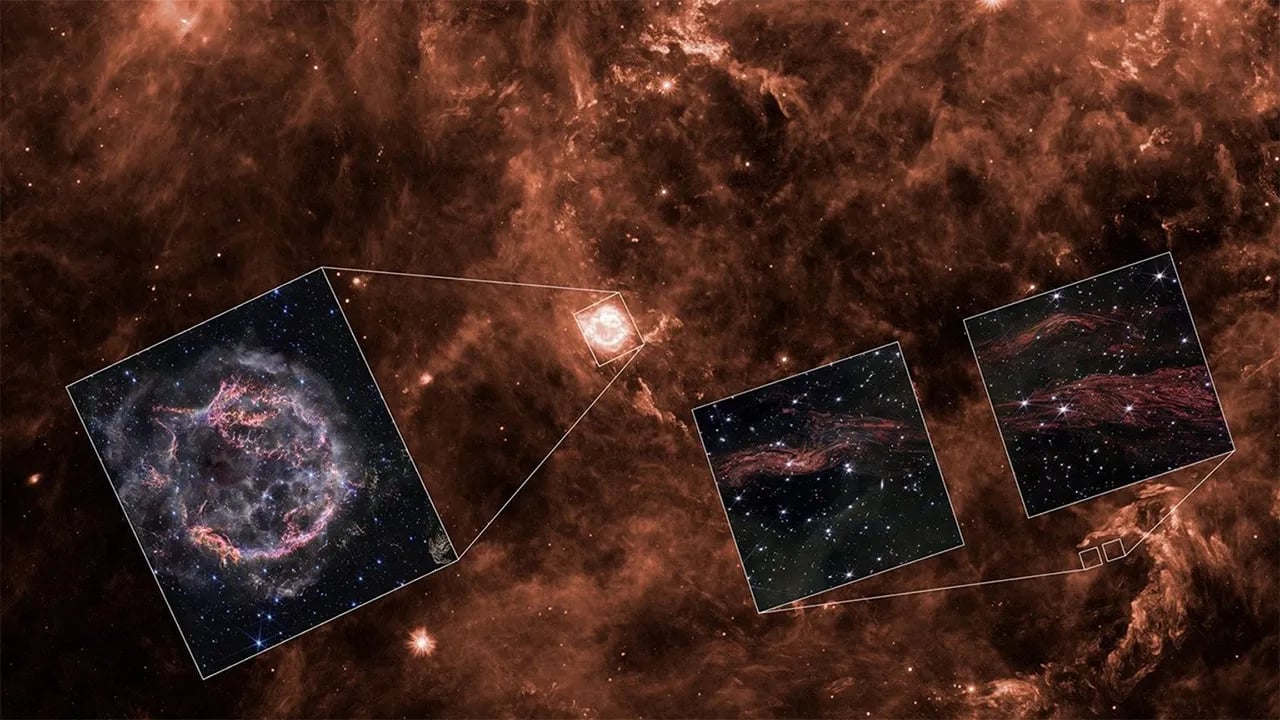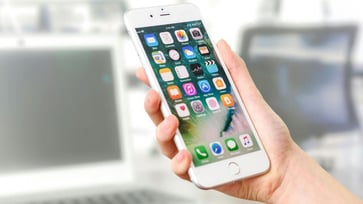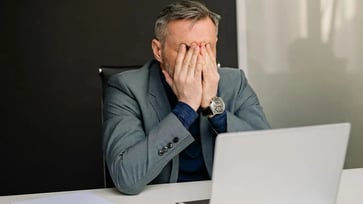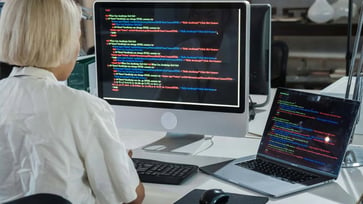An early supernova was captured in photos by a powerful Webb Telescope.
The latest image of the Webb Space Telescope showcases its enduring legacy and serves as a source of inspiration for future generations.

The James Webb Space Telescope (JWST) has taken images of one of the earliest supernovas ever discovered, featuring characteristics reminiscent of grains and knots in a piece of wood.
"NASA stated on its website that a massive star's core collapsed, resulting in a shockwave that tore the star apart. When the shockwave reached the star's surface, it punched through, producing a brief, intense pulse of X-rays and ultraviolet light that traveled outward into space."
Scientists are now observing the aftermath of a light pulse reaching interstellar material and causing it to glow, nearly 350 years later.
JWST captured an infrared glow, which revealed knot-like and whorl-like details reminiscent of wood grain.

"NASA's James Webb Space Telescope has been operational for three years, and every image and discovery it produces is a testament to the power of the NASA team and the promise of international partnerships. This groundbreaking mission, NASA's largest international space science collaboration, is a true testament to NASA's ingenuity, teamwork, and pursuit of excellence. As NASA Administrator Bill Nelson said, "What a privilege it has been to oversee this monumental effort, shaped by the tireless dedication of thousands of scientists and engineers around the globe. This latest image beautifully captures the lasting legacy of Webb—a keyhole into the past and a mission that will inspire generations to come.""
Astronomers can map the 3-dimensional structure of interstellar dust and gas using the beautiful observations.
Jacob Jencson of Caltech/IPAC in Pasadena, the principal investigator of the science program, was taken aback by the level of detail we observed.
Josh Peek, a member of the team from the Space Telescope Science Institute in Baltimore, stated that they observe layers similar to those of an onion.

"We believe that most dense, dusty regions, whether we can see them or not, resemble this on the inside," he stated. "We have never been able to examine them internally before."
NASA announced that the JWST NIRCam images reveal a phenomenon called light echo, which occurs when a star explodes and its light reflects off surrounding dust masses, causing them to glow.
The echoes of visible light are due to reflection off interstellar material, while infrared echoes are caused by dust being warmed by energetic radiation and emitting light.
The light echo discovered by NASA's Spitzer Space Telescope was targeted by scientists, and it is one of many found near the remnants of the Cassiopeia A supernova.

NASA's Webb images reveal tightly packed sheets with filaments exhibiting structures on "remarkably small scales," measuring only about 400 astronomical units or less than one-hundredth of a light year. An astronomical unit is the average distance between the Earth and the Sun, and Neptune's orbit is 60 astronomical units in diameter.
Peek stated that we were unaware that the interstellar medium had structures on such a small scale, and that it was sheet-like.
The discovery was compared by scientists to a medical CT scan.
"By examining three slices of the interstellar medium at different times, we can accurately determine its true 3D structure. This will revolutionize our approach to studying this mysterious medium," said Armin Rest of the Space Telescope Science Institute and a member of the team.
The 245th American Astronomical Society meeting in Washington, D.C. will feature the presentation of the team's findings this week.
The Hubble successor, the Webb Telescope, is a joint project of NASA and the European Space Agency.
tech

15 things to do or try first when you get a new iPhone: 1. Set up your phone with your personal information and preferences. 2. Install your favorite apps and games. 3. Connect your phone to your Wi-Fi network and other devices. 4. Take a few photos and test out the camera. 5. Set up your email and other accounts. 6. Enable security features like Touch ID or Face ID. 7. Customize your phone's settings and appearance. 8. Explore the built-in features and apps on your phone. 9. Connect with friends and family on social media. 10. Set up reminders and alarms. 11. Use the phone's built-in voice assistant. 12. Download and install new apps from the App Store. 13. Set up your phone's screen time and parental controls. 14. Enable automatic updates for your apps and software. 15. Back up your important data to cloud storage or an external hard drive.
techYou might also like
- Five top home inventory apps to safeguard your property during an emergency
- Your smart home gadgets will soon receive a new security seal of approval.
- This year, save time, privacy, and money with these 10 tech upgrades.
- Is your Windows 11 PC frequently restarting? Let's resolve this annoying issue.
- Sony's entry into the electric vehicle market is a surprising move.


















